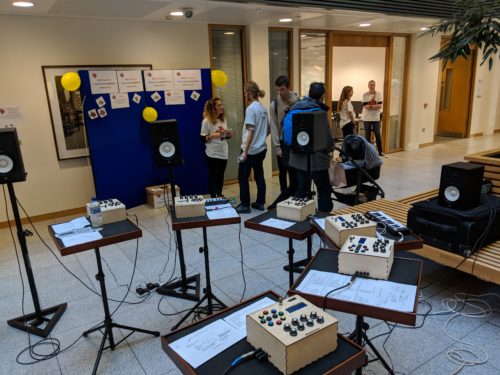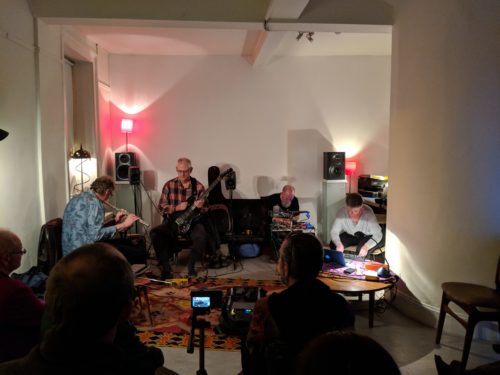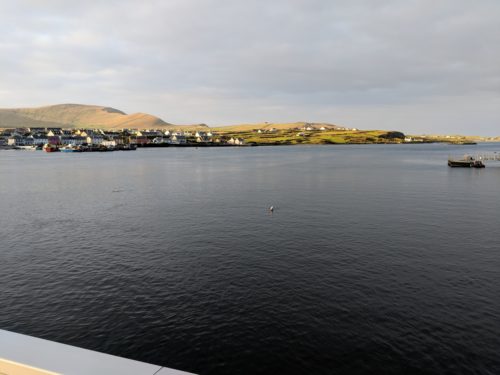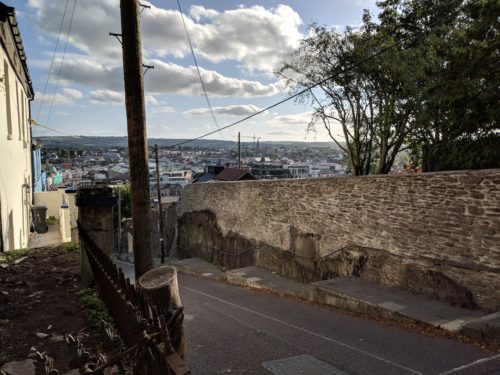As fate would have it, I’m actually not writing this blog post from the confines of my Cork apartment, or even from a nearby coffee shop or distant Irish city. I’m writing from Louisville, KY, where I did my first master’s in music composition and which I’m visiting for the premiere of my orchestra piece, Zaira and Irene. The title comes from Italo Calvino’s Invisible Cities, in which he describes Irene as “a name for a city in the distance, and if you approach, it changes.”
The last time I was in Louisville, I was very much viewing Cork, UCC’s Experimental Sound Practice program, and Ireland from a distance. Though I had been to the island before, the prospect of living in the stunning southwest and diving into such a renowned music culture had a near–mythic quality to it. The perspective from a distance is one thing and the experience within is another—in so many ways, Cork has exceeded and subverted the expectations that the view from Louisville promised.
The most significant subversion is the appearance of what “Irish music” means. Traditional music may be emblematic of Irish sonic culture, but nestled in the heart of Cork lives an equally vibrant and equally Irish (or, perhaps, Cork–ish) culture of experimentation, improvisation, and sound art. I’ve spent the past two months learning how to program micro–processors to control electronics, discussing the aesthetics of digital music and production, and engaging in hour–long free improvisations using aluminum foil and the strings of a piano. I’ve performed an open form electronic piece as part of the Cork Audio Visual Ensemble, attended a stunning improvised set at the unassuming Guesthouse venue, and bounced around various pub shows jammed with people for the Cork Jazz Festival.

Setup for the Cork Audio Visual Ensemble (CAVE) at European Researcher’s Night.

Stephen Adams, John Godfrey (UCC Music Department Chair), Mick O’Shea, and Karen Powers perform an improvised set at The Guesthouse.
In exploring the fringes of contemporary art music, UCC’s music department has captured the essence of what makes Cork’s experimental music scene so enthralling, so “Cork” and, in turn, so quintessentially Irish. (For what it’s worth, I’m also studying Irish Sean-Nós singing—can’t neglect trad music entirely!)
But the perspective of distance doesn’t stop there. Yes, the southwest of Ireland is shockingly beautiful, which all of the Mitchells experienced when we embarked on the Ring of Kerry in late September. And yes, the 25–minute walk uphill to get to UCC’s isolated music building includes a panorama view from Lough Mahon to what I can only assume are the foothills of Kerry.

Portmagee, Co. Kerry, where we stayed during our Ring of Kerry adventure.

Overlooking Cork City.
But Cork city also boasts a jungle of labyrinthine roads; its neighborhoods don’t contain the landscaped vistas of American lawns, but simple concrete sidewalks abutting concrete driveways and concrete houses; there’s a campaign on to “save the Lee” from a scheme to build higher walls to (theoretically) prevent flooding. This is all also quintessentially Ireland, quintessentially Cork, and just as much the heart of the landscape as the patchwork green of the countryside.
Back in Louisville, I’m remembering the city from the distance—and now know that Cork contains so much more.
